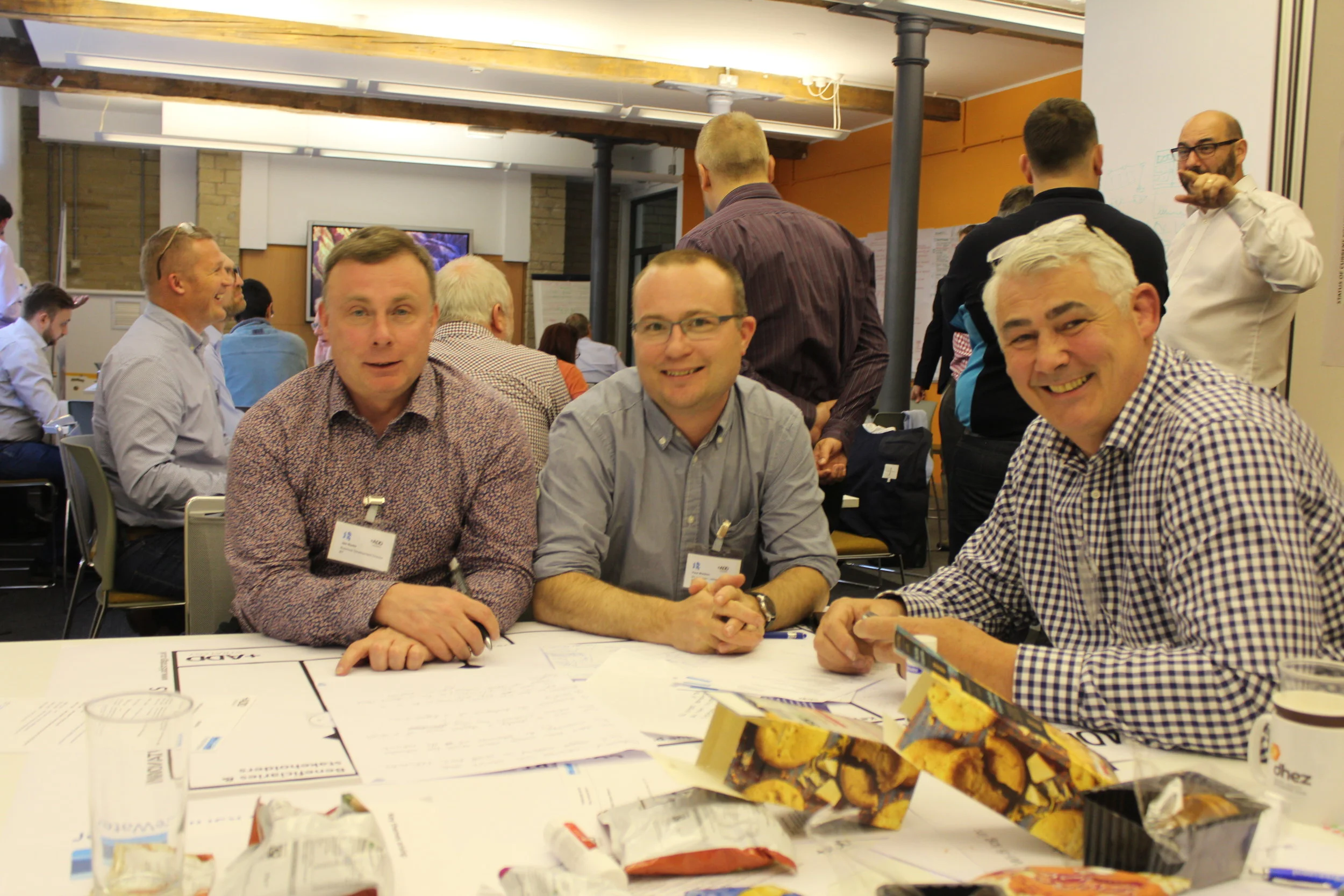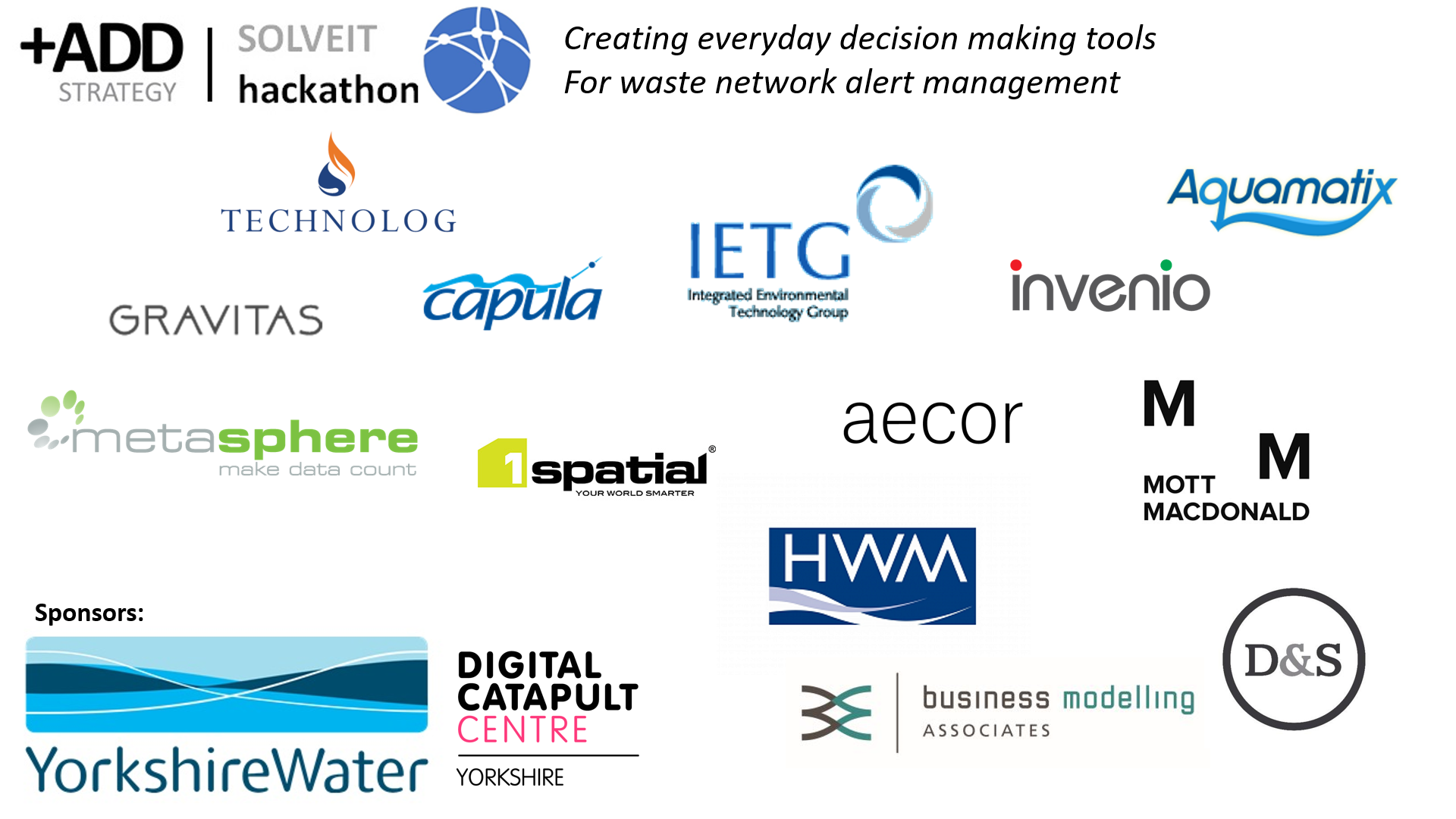




Establishing 'intelligent assets'
Creating a truly visible waste water network
…reducing pollution and flooding
Establishing 'intelligent assets'
Creating a truly visible waste water network
…reducing pollution and flooding
Focused on moving forward
Yorkshire Water are seeking to develop visibility in the network. This includes co-design of intelligent networks and assets – the broader initiative being managed by +ADD over the coming year seeks engagement from any supplier, research or innovator who can support development of:
Visibility of what is happening in the waste water management network
To better discern priorities and respond efficiently to actionable alerts
Offers the ability to make automated decisions and learn
Offers the potential to radically reduce pollution and predict internal flooding
… we have achieved a lot in just 12 months (See below)

Register
Register
What's the programme?
The programme's overall aim is to create visible waste water infrastructure.
This relates to several goals including reducing internal sewer flooding by 70% and reducing pollution incidents by 40%.
While the aim is simple, the change requirement and associated challenges are quite complex, interrelated and potentially require new ways of working.
These include selection of future proof telemetry, data management infrastructure and compatible sensors.
Further substantial changes to data management capability and analytics to accommodate data scaling and increase effective alarm management and actionable decision making.
We started with an IdeaLAB in December 2017 and this has been followed by a range of events including a hackathon and an innovation sprint on different aspects of the challenge over the coming year.
Our goal was to discover technology led and data driven opportunities to have a substantial impact on operational performance in predicting and avoiding pollution incidents, and reducing the level of internal flooding incidents.
“The +ADD approach has seen a breakdown of traditional barriers to different thinking and forged tangible collaboration.
We have realised 16 business cases for integrated solutions; better defining operational needs and practical ambition along the way.
The initiative has seen engagement from nearly 70 organisations including established suppliers and enterprise”
What are the specific goals?
The programme has focussed on defining and validating collaborative business cases for combinations of telemetry and sensors providing optimal coverage, value for money and future proofing. Our goal has been to develop a solution giving best coverage including small bore pipes which, notoriously don't have a suitable solution both operationally and economically. This is a challenge due to the fact most failures occur in small bore environments.
The initiative will provide an opportunity for component vendors and those with both pre-market and existing solutions to work together to create new solution concepts. The output will be business cases for investment in POC (Proof of Concept) systems, design and deliver and trial models.
We will be joined by experts and stakeholders from Yorkshire Water as well as a host of professionals in grant funding, supply chain innovation practitioners and other enablers to support development of different thinking and new form projects.
Key areas of focus include:
Seeking to overcome challenges of offer versus needs (the demand for integrated solutions from multiple vendors).
Creating an ideal mix of sensors providing actionable insight - we will be sharing the outputs of the recent alarm management hackathon.
Understanding compatibilities of system hardware and software.
Considering telemetry requirements for different types of sensors and use in different aspects of the network/ scenarios.
Considering data governance, harmonisation and standards.
The programme to date
In December 2017
Thanks to the 120 participants who joined us at the beginning of this journey...
Participate in our programme launch event put vendors and agencies in a good position to understand the goals and opportunities available.
In March 2018
Yorkshire Water are investing in increasing their live data 5-fold in scale from new sensor networks.
In early 2018 we are delivering a data sandpit and hackathon with sponsored places and prizes to explore alarm data logic and how best to prioritise actionable insight in real time.
In June 2018
Building on contributions to thinking in we delivered an innovation design sprint to enable collaborative business case development for selecting sensors, telemetry and associated operationalisation.
The sprint provided support to enable topical developments and shape business cases for investment.
Our goal was to ensure clear roadmap and future consideration as well as better decisions in the short term.
Engagement and key outputs to date
The programme has seen great engagement and the development of new market collaborations to solve water company needs.
Our work goes far beyond generating early stage ideas…
So far we have seen the conception of 4 new near to boundary sensors and a novel datahub, as well as a host of data management and analytics concepts.
Having reviewed the outcomes, +ADD are working with Yorkshire Water to develop a new tender (to be released in January 2019).
Further we are supporting pre-trial development and testing of new technology proposals to validate relevance to full tender engagement.
+ADD are supporting commercialisation, investment, establishing routes forward for the initiative participants.
Yorkshire Water is committed to the initiative and is actively seeking to invest in resultant projects having set aside resources and budget to accelerate innovation and adoption of promising solutions.
Whats next?
It has become clear that the significant majority of waste water floods and events occur in secondary near to boundary infrastructure.
Yorkshire Water have made it clear that as a result of the programme they are open to mixed sensor and supplier solutions that significantly enhance whole network visibility and will not simply implement proven partial visibility solutions.
There will be a tender release in October / November 2018 with three Lots (sensor mix/ Telemetry and data management/ Analytics)
The +ADD team are now working with the selected consortia to validate pre-market technologies and their relevance to the upcoming tender.
This work includes consideration of technical feasibility, operationalisation impacts and commercials. Further we are supporting smaller initiative participants to engage and build collaborations, develop financials and consider practical market deployments.
The telemetry and sensor mix sprint was completed in June in collaboration with the Digital Catapult Centre Yorkshire in Bradford. We have now finalised a shortlist of projects to progress to tender invitation and pretrial (where they are new developments).
For more information on the programme please contact peter@addstrategy.co.uk

Why do we need to change?
There are no silver bullets…
We need different thinking!
Why do we need to change?
There are no silver bullets…
We need different thinking!
Background to the challenge
A blockage in Harrogate (Wipes and luxury toilet paper)
While infrequent, Yorkshire Water understand that internal flooding can be one of the most unpleasant things you can experience in your home...
Sewer flooding is the most unpleasant type of flooding, especially in the home. There can be a number of causes. For example:
• The sewer is too full
• A blocked or collapsed sewer
• A pumping station failure
Tree roots may cause damage to sewers, and problems may also occur as a result of unsuitable items being put into the sewer, for example wipes, fats, cotton buds, sanitary items as well as builders’ rubble.
Flooding can also occur due to circumstances out of our control as a result of exceptional rainfall, rivers overflowing or internal plumbing issues.
One of the most common causes of operational problems and sewer flooding is a ‘soft blockage’. These blockages are caused by, for example, wipes being flushed down the toilet and cooking fat being poured down the sink.

The Challenge
The Challenge
Reasons for pollution and internal flooding affecting customers
Pollution
A wide range of factors affect potential pollution events including weather, social factors, infrastructure condition and damage, pump failures and blockages to name a few.
Sewers sometimes flood during or after heavy rain if they are unable to cope with the amount of water. However, more commonly it is how we use our sewers and what we put down them that causes problems.
Many incidences of flooding could be avoided by not flushing items such as:
- Wipes
- Nappies
- Sanitary towels
- Cotton buds
- Tampons and applicators
- Condoms
- Kitchen roll
Fat, oil and grease harden as they cool and cause blockages and contribute to pump failure if poured down plugholes.
Internal sewer flooding
Very few people are affected by public sewers flooding their home or garden, but for those who are it is an extremely unpleasant and distressing event.
If sewage enters a building, it is called ‘internal flooding’. If it floods gardens, or surrounding areas such as roads or public spaces it is called ‘external flooding’.
Sewer flooding can be caused by:
- blockages in a sewer pipe
- failure of sewerage companies’ equipment
- the sewer being too small to deal with the amount of sewage entering it
- too much rainwater entering the sewers e.g. from roads, houses and fields
- rivers and watercourses that have overflowed and flooded the sewers through manholes
- groundwater levels rising after long periods of rainfall and entering the sewer.
The cause of the problem may be some distance away from where the sewer flooding is happening.










